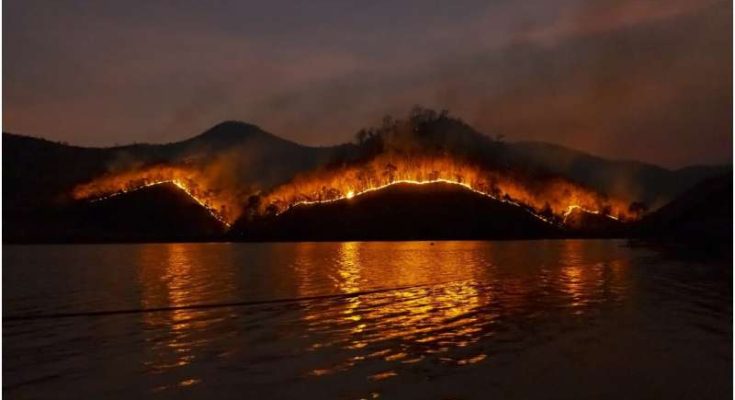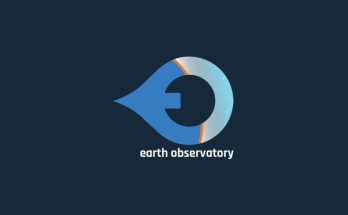As millions of people in New York and other major North American cities choke on acrid smoke, they could point their accusatory fingers farther North than the wildfires ravaging Quebec—all the way to the global Arctic, a study pulished in Nature Communications says.
Rising temperatures in the region are contributing to the weather conditions that make wildfires more likely to occur, experts say.
The top of the planet is warming much faster than the global average—at four times the rate, by some estimates—and losing ice that reflects radiation and shields the Earth from some of the Sun’s heat. As the Arctic heats up, permafrost thaws, releasing large amounts of greenhouse gases that further amplify global warming. Siberia, which holds the largest expanse of permafrost in the world, is currently experiencing an extreme heat wave, but there are other hot spots in the Arctic as well.
“Right now, the Canadian Arctic is about 10 degrees (Celsius) warmer than average and that’s stretching down over Hudson Bay. Large parts of Canada are definitely warmer than normal for June at this point already,” said Julienne Stroeve, a professor of polar observation and modeling at University College London.
That plays into the Arctic’s increasingly disproportionate effect on mid-latitude weather patterns. “Spring is coming earlier than it used to and autumn is coming later, so that also makes the conditions drier and hotter for these sort of extreme wildfires to occur,” she said. “These dry conditions combined with lightning strikes are certainly one of the reasons why it’s so bad at the moment in Canada.”
The Arctic’s outsized impact on planetary warming “elevates the frequency of fire,” agrees Jason Box, a professor of glaciology and climate at the Geologic Survey of Denmark and Greenland.
Rapid Arctic warming also appears to be making jet streams wavier and slower, which can exacerbate the problem.
Jet streams are bands of strong westerly winds driven by the collision of cold polar and hot tropical air. As Arctic warming accelerates, the differential between the two types of air shrinks. Normally fast-moving currents become sluggish and take more meandering paths, creating heat domes which, in turn, can exacerbate high-risk wildfire conditions, especially in higher latitudes.
Several factors are creating a wavier jet-stream pattern right now, including a strong, persistent heat wave in the North Pacific Ocean, said Jennifer Francis, a senior scientist at the Woodwell Climate Research Center. The resulting air pressure ridges and troughs are responsible for dry conditions where the Canada fires are raging, as well as for the winds carrying smoke to the Eastern seaboard. The rapidly warming Arctic may be further intensifying that pattern, she said.
That a thawing Arctic has impacts far beyond the borders of Northern countries was seen in a 2021 study published in Nature Communications. It showed that the loss of Arctic sea ice during the summer months created more fire-favorable weather in the western US. Over 40 years, the changes in fire weather, driven by the declining ice, were of a similar magnitude to variations in climate caused by the El Niño-Southern Oscillation, which also affects fire conditions in the Western US, the paper said.
In that context, the need for better fire preparedness becomes urgent. In Quebec, whose wildfires are the source of the choking smoke currently blanketing New York, the burning expanse is 500 times larger than the average acreage burned over the past 10 years, according to Quebec’s forest-fire protection agency, which tracks fire activity. That’s left the province’s firefighters hopelessly outmatched.
Even if the world lowers emissions, a certain amount of climate change fallout is already locked in, said Gail Whiteman, a professor of sustainability at the University of Exeter Business School in the U.K.
“How do we build agility in response to extreme weather?” she asked. ”Long-term trends in Arctic warming and change are driving global risk to places that haven’t seen it before. So the Arctic is now in Brooklyn, or Manhattan, and Ottawa.”
#ArcticIceMelt; #GlobalWarming; #riskOfFarAwayWildfires





